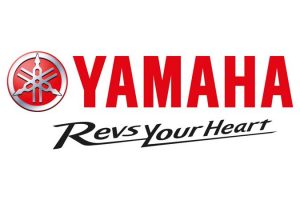Yamaha Motor reels from semiconductor shortage, says Koike

MOTORCYCLE brand Yamaha Motor Philippines, Inc. said that the production of its motorcycles has been reeling from the semiconductor shortage which has affected its overall sales.
Hiroshi Koike, Yamaha Motor Philippines president, said that the company’s sales for 2022 are around 20% of pre-pandemic levels due to the lack of semiconductors used in assembling the motorcycles.
“This year, percentage-wise, I would say [we are] around 20% of pre-pandemic levels. In 2019 we had 580,000 units sold — [that’s] the most units sold in a year, a record-high for us,” Mr. Koike said in an interview on the sidelines of a launch event last week in Batangas.
“The older stock is gone and we are having difficulty replenishing our stocks, coming mainly from the chips,” he said, adding that many different industries “are fighting for” semiconductors.
Mr. Koike said that due to a lack of supply, 2022 is on par with last year in terms of units sold. “We wanted to increase but we ended up in just having similar units sold as last year,” he said.
According to Mr. Koike, the company has been experiencing production bottlenecks following the low supply of semiconductors.
“Unfortunately, the biggest selling models for us are the ones that use semiconductors,” he said, citing Aerox, Mio, NMAX, and Fazzio. “We source our chips from Taiwan, Malaysia, from multiple countries.”
Mr. Koike said the company does not directly procure as semiconductors come from suppliers that put the chips into the products such as an anti-lock braking system.
“Motorcycles do use quite a bit of semiconductors for anti-lock braking system you need a sensor, the keyless ignition, the idling stop, and the function where you can connect the phone to the motorcycle,” he added.
Following the supply gaps in semiconductors, the company’s new production line launched in 2021 has not been operating at 100% capacity due to supply issues, he said.
“There is a new third factory line which we started mass producing last year. Due to the lack of component parts, we are not able to use up to the full capacity [at this] time. This is coming from the lack of semiconductors. The third factory line is about 40% operating level,” Mr. Koike said.
“[The] demand is strong. Dealers are asking for more. But at the moment, we cannot supply. Our first goal is to hopefully come back to at least pre-pandemic levels. If things are better, we still have room to expand and create another factory,” he added.
Mr. Koike said that Yamaha’s third line is capable of producing 300,000 units per year, while the other two lines have a total capacity of 400,000 units per year.
He also disclosed that Yamaha Philippines implemented price increases in July on the back of surging production costs.
“The price increases were different among models. But the average price increase is 3%. Some are more, some are less,” Mr. Koike said. — Revin Mikhael D. Ochave




